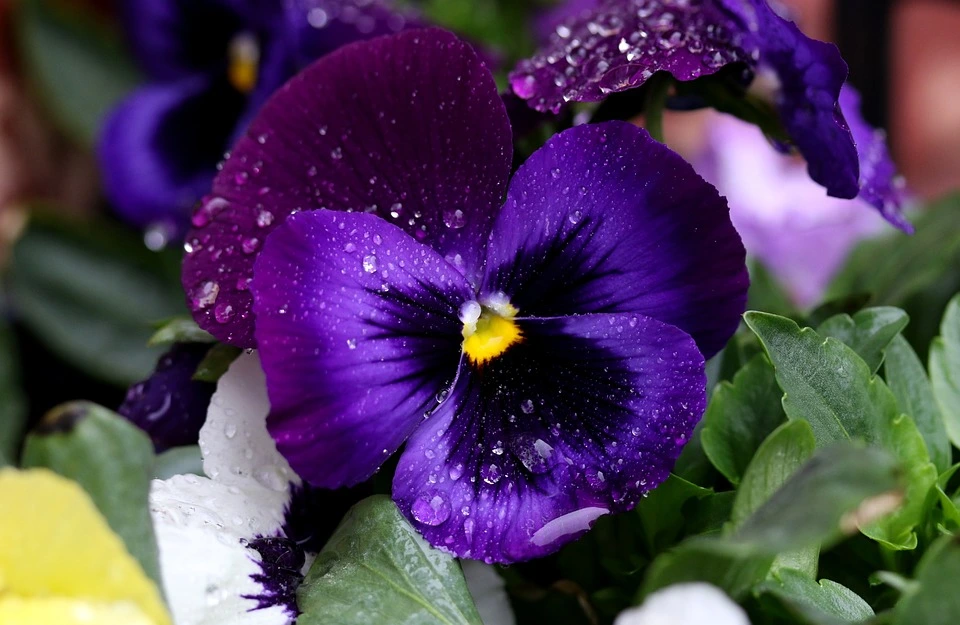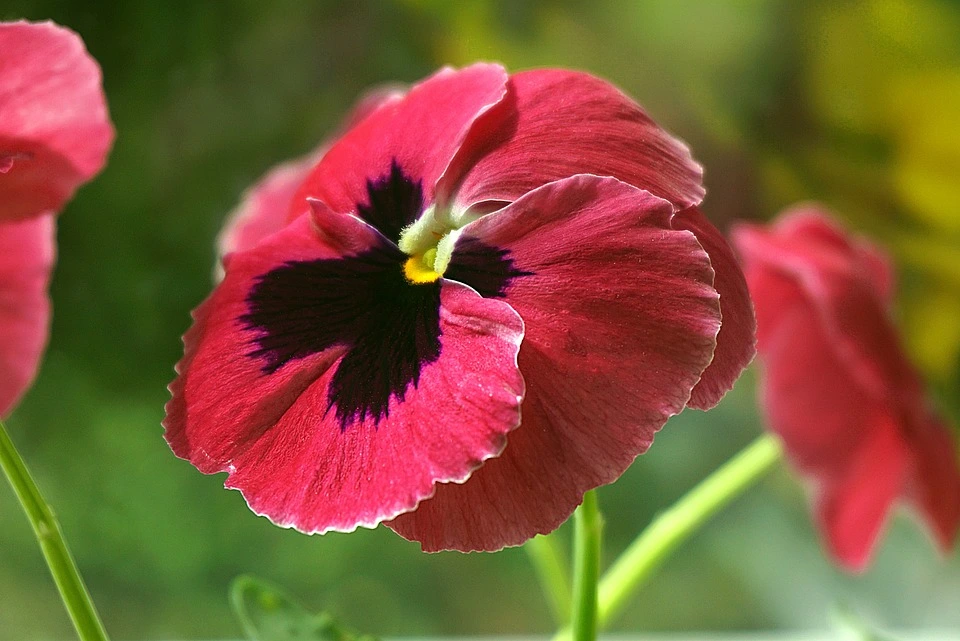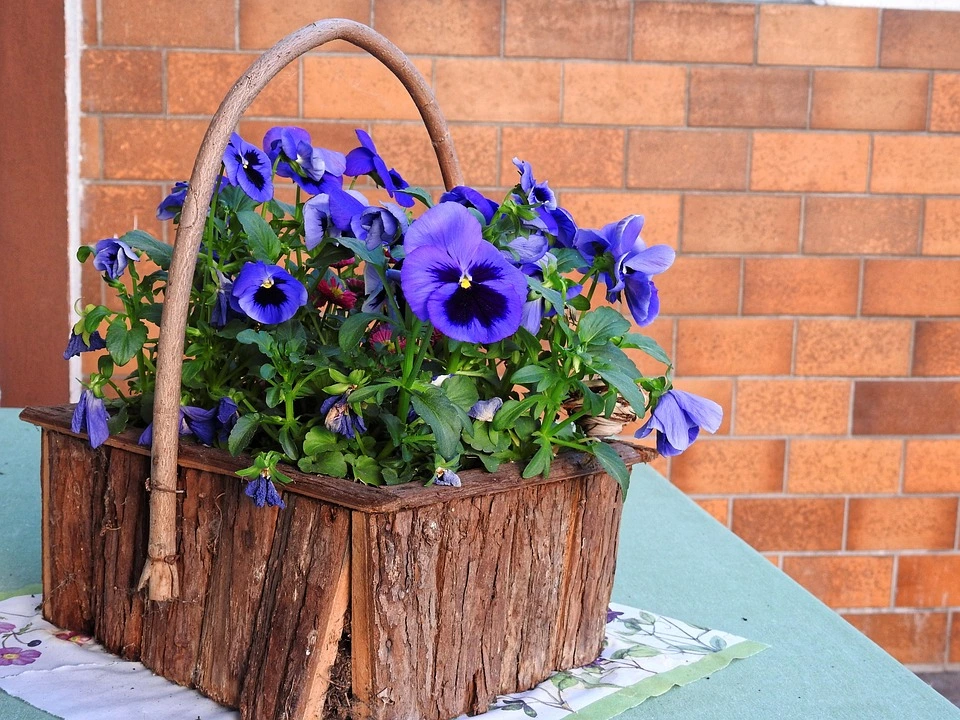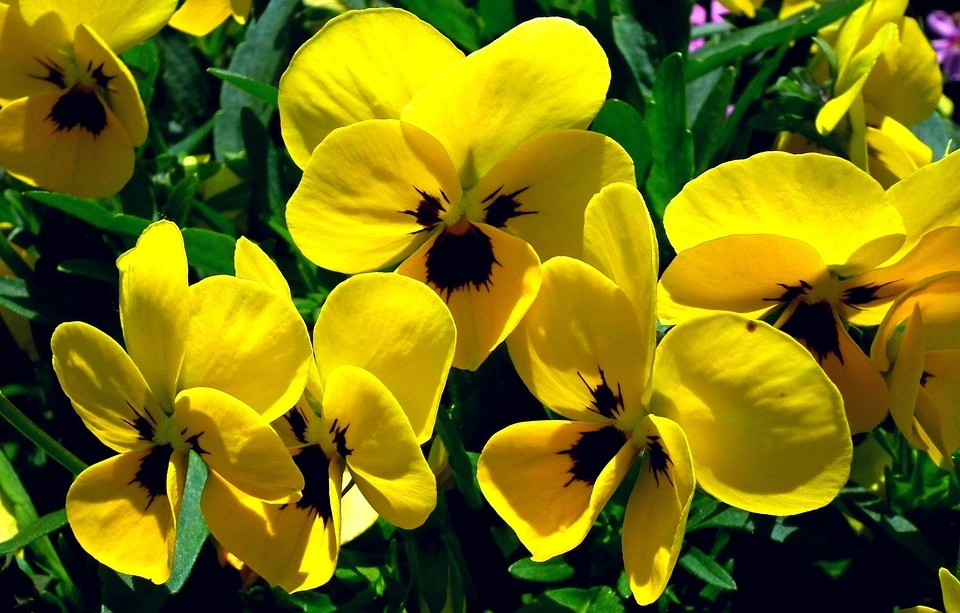Planting Pansies - Learn How To Grow These Lovely Flowers
Pansies are popular plants that decorate flowerbeds, and more. Pansies in pots placed on a balcony are a perfect decoration and an occasion to marvel at the magnificent color combinations they offer. Note that these plants have never occurred in the wild. They were created based on several other species, and now they are among the most popular plants in the world. Check how to care for pansies.

Pansies – what are these flowers?
Pansies are plants also known as Viola wittrockiana Gams. They belong to the group of biennial plants. They were created by crossbreeding various types of violets.
The plant grows from 10 to about 25 cm (ca. 4-10 in) tall, depending on the variety. Pansies develop two types of leaves – top and bottom. The bottom leaves are much wider than the top ones, and their shape is oval-heart. The upper leaves are lanceolate, and their edges are serrated. The flowers grow out of the stems, and are colorful.
Pansies’ blooming time falls between the early March and the beginning of or mid-June. Fully developed flowers stay on the plant for a relatively long time. For this reason, pansies are popular ornamental plants grown on balconies and patios.

Where do pansies come from?
Pansies have their origins reaching the 19th century. They were created by crossbreeding Viola tricolor, Viola cornuta and Viola altaica. It means that pansies aren’t a product of nature, but plants created by humans, based on several species.
Pansies – varieties and colors
Pansies are highly celebrated flowers. The species’ creation resulted in numerous varieties which are very popular around the world. The plants can be divided into early- and late-blooming cultivars. Here are the most common early varieties (sometimes referred to as winter pansies):
- hiemalis – a variety of rich blooming, but small flowers,
- trimardeau – the flowers develop characteristic blotches,
- vorbot – a variety with characteristic large flowers,
- multiflower Dutch – with large flowers of intense and varied colors.

The most popular mid-early and late varieties:
- roggli – it develops huge flowers when blooming,
- Swiss – fast-growing and developing rich florescence,
- Engelman – with amazing large flowers,
- orchideiflora – with large pastel-colored flowers; their petals are serrated,
- trimardeau (late variety) – the plant develops many flowers with characteristic blotch on the bottom petals.
Can you grow pansies in pots?
Potted pansies are a perfect balcony or patio decorations. Thanks to them, you can enjoy beautiful flowers since the earliest days of spring. Pansies in pots need a sunny enough location, but they won’t grow well when facing south, exposed to excessive sunlight. If you decide to plant pansies in containers, make sure to place them on the western or eastern side of the house. Partial shade prolongs their blooming.

What is the best soil for pansies?
When planting pansies, make sure to keep some spacing between particular plants. Optimally, keep a space of about 15-20 cm (ca. 6-8 in) between each seedling. You can use a universal potting mix designed for balcony plants (if you’re planting them in containers), or a mix for flowering plants if you want to grow your pansies in flowerbeds. The ground should be fertile and permeable. Make sure the containers have large holes to remove any excess water.
How to water pansies?
Potted pansies require regular watering. Make sure the soil in the pots is constantly damp. But avoid a situation in which it’s soaked. This might cause standing water and rinsing of the nutrients needed by the plant. It’s a straight way to harm the plant and its root system. Also, never let the soil dry completely. It’s very dangerous to the plant.
Water the plant in the morning or evening – never during the day. When watering, omit the leaves and flowers.

Pansies – fertilizing
Pansies don’t require additional fertilizing. The nutrients which are already present in the soil are more than enough for the plant’s proper development. You can use a special granulated, slow-release fertilizer which releases nutrients as the time goes. It’s best to mix the fertilizer pellets into the soil, and then plant the flowers in it.
Can you propagate pansies?
Pansies are widely available in many garden stores during springtime. For this reason, propagating them at home is not popular among gardeners – but it’s not impossible. The process begins from sowing the seeds between June and July. The seeds begin sprouting fast at the temperature of 15-18°C, and you can notice young plants after just 1-2 weeks. In September, when the seedlings have several leaves already, you can plant the pansies in a target location. If you’re growing pansies in flowerbeds, they need protection from frost. The plants begin blooming in March, April or May, depending on the variety.

Pansies – diseases and pests
Damping-off is the most common disease threatening the plant. It usually affects plants grown from seeds at home. The disease attacks the seeds, which quickly die back right after sprouting.
Phytophtora is a fungus that develops in soil and attacks the roots of the plant. The oldest leaves growing at the bottom of the affected plant begin wilting. Then they change their color to yellow, and fall off.
A too high humidity of the surroundings, especially in spring and autumn creates perfect conditions for another fungus – downy mildew. The affected leaves turn brown and die back. Grey mold is an equally dangerous disease observed in many cultivated plants.
Red spider mites are common pests appearing on the plant’s leaves. If forms small bright spots on the attacked leaves. As they grow larger, the plant’s leaves die back. Aphid is another insect commonly attacking pansies. When the pest feeds on the plant, characteristic dew appears on the surface. It creates perfect conditions for fungi.
If you notice signs of any diseases or pests, use adequate products to get rid of them. You can purchase them in any garden store. Remember that all infected leaves and flowers have to be removed.

📍 What does a pansy look like?
Pansies are biennial plants – they are short and grow in clumps. When blooming, they amaze with the variety of colors. Their petals (usually four) are heart-shaped and overlapping. Pansies bloom starting from early spring, which makes them perfect first balcony and patio decorations.
📍 Until when do pansies bloom?
Potted pansies are a popular solution, not only because of the rich variety of colors. The plant begins blooming in early spring, so you can enjoy the flowers very soon. Interestingly enough, pansies bloom for a long time – until the beginning of summer.
📍 When to plant pansies?
Plant pansies at the beginning of March. Note that the plant is quite resistant. Low temperatures and light freezes won't harm it.
📍 What are the benefits of pansies?
Garden pansies are valued not only for their appearance, but also the properties of the tea made of them. It clears the skin. Pansy tea is a diuretic and has antioxidative and anti-inflammatory properties.
Featured articles




